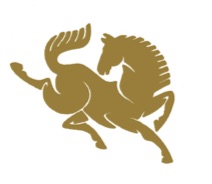The pelvic floor is our foundation, it's what connects us to the horses back more than anything else. Most people I work with are completely disconnected from this area. It's often taken for granted but it should be carefully considered and engaged in all that we do.
In Pilates the pelvic floor is the foundation to our "connection", the ability to control not only the muscles but the placement of the pelvis is crucial in all of our exercises. This connection to the pelvic floor translates into all that we do, and most specifically how we carry ourselves, in the saddle and out. When I work with new Pilates students, the first thing I look at is the pelvis and the feet. My first question to their trainers is always how do the sit? Often people "dump" into their pelvis, what I mean by "dumping" is that it's unconsciously done, but they have a tendency to let all of their energy sag and collapse in the pelvis. This creates a pelvis which tilts posteriorly, the person then sits more to the back of their sits bones or almost on their tailbone. From her it makes it almost impossible for them to drop their leg down and open their hips, preventing them from achieving a deeper more connected seat.
What it does to the rest of the picture as we travel up the spine is also not helpful. Most often the riders are collapsed in their middle with the shoulders rounding and the head tilting forward. This also then prevents the rider from properly supporting themselves from the inside, and they rely more heavily on their hands for balance than their seat.
So how do I address this, you ask? To be clear it's not a quick fix, this takes practice and resets up and down the kinetic chain. Here's how I start. I teach the rider what a neutral pelvic alignment is in all plains of motion. Just teaching it in the saddle, is a start, but I find isn't as effective as teaching them square and neutral sitting, lying prone and supine, and lying on their sides. I start in a supine position on a mat with pelvic rocking, teaching the feeling of the pelvis in a tucked, extended, and neutral position. This is also nice to help them learn to loosen up and not lock the hips, from here we do various exercises to challenge their ability to maintain neutral and strengthen their pelvic floor. I then move them into a seated position. Here we work on active sitting which engages and lifts the pelvic floor, and we challenge that engagement while we move the pelvis and the upper body. This helps them to understand how not to "dump" into their pelvis. I then take that to standing, and practice active standing, walking and wall roll downs. All with the pelvic floor lifted and engaged. Once the person is able to feel this and maintain good engagement we play with them on their horse and I have their trainer challenge them to see how well they can actively keep the engagement or if they quickly slip back into bad habits. From here I can then come up with a good bit of homework that the rider and trainer can do to continually build awareness, strength and engagement in the pelvic floor.
There is so much more to be addressed when it comes to the pelvic floor. I have given an overview of what I do and how I address the pelvis; but this is a very important area that is very individual to each person. A lot more is involved in developing a better connection to the pelvic floor, and understanding how amazing this connection can be to opening your seat and developing better balance and control in the saddle. So I plan on writing more blogs on this subject and welcome any questions you may have. I would like to leave you with one finally image on how powerful this connection can be, positive engagement of the pelvic floor has a positive effect up and down the body, and creates a beautiful picture in and out of the saddle. So keep trying to develop awareness and strength in this area it can only benefit you.
